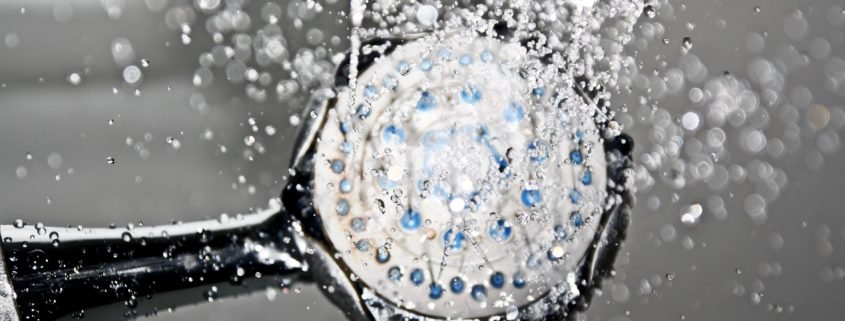7 Essential Pros and Cons of a Tankless Water Heater
When it comes to keeping your home warm and cozy, nothing is more important than hot water. After all, you can’t take a shower or get clean in any other way. But traditional water heaters, compared to tankless water heaters, are energy-intensive appliances that use about 20% of the natural gas consumed throughout the country every year. Moreover, they are prone to maintenance issues and shorter-than-expected lifespans. So if you’re looking for a more eco-friendly alternative to a standard gas water heater, a tankless version might be perfect for you. In this article, we are going to explore the pros and cons of tankless water heaters and show you how they work.
List of Contents
What is a Tankless Water Heater?
A tankless water heater is a device that heats up water as it is being used. It doesn’t store water in a tank, so it can be an excellent solution if you have a limited amount of space in your home. It can also be a great option if you want to save energy and money because tankless water heaters use less energy than traditional models. A traditional water heater stores water in a tank until it’s needed. It then gives off that water at a steady temperature. A tankless water heater only heats up water as it is being used, so it can’t provide hot water for a group of people at once. But that could be a good thing, as it can reduce the risk of scalding accidents.
Pros of Using a Tankless Water Heater
– Smaller Footprint – Since a tankless water heater only heats up water as it is being used, it has a smaller footprint than a traditional water heater. This can be useful if you don’t have a lot of room in your home for appliances.
– Less Waiting Time – With a traditional water heater, you have to wait for the water to heat up before using it. You don’t have to do that with a tankless option. You can get clean water as soon as the heater starts heating up the water.
– Eco-Friendly – Traditional water heaters use natural gas, which releases carbon dioxide. Carbon dioxide can trap heat in the atmosphere, which can cause global warming. A tankless water heater, on the other hand, uses electricity. Electricity can also contribute to global warming, but a tankless option uses much less electricity than a traditional water heater.
– Save Money – Traditional water heaters use a lot of energy, which can cause them to increase your energy bills. Tankless uses less energy, so it can help you to save money.
Cons of a Tankless Water Heater
– Higher Initial Investment – Since a tankless water heater uses less energy than a traditional water heater, it doesn’t use as much electricity. That means it doesn’t generate as much money for your utility. To make up for that difference, the tankless water heater costs more than its traditional counterpart.
– Smaller Capacity – While a tankless water heater can heat water faster than a traditional water heater, it doesn’t have as much capacity. That means you will have to wait longer for enough hot water if you have a big family.
– Can’t Handle Huge Amounts of Water – Some tankless water heaters can’t handle large amounts of water all at once. That could be a problem, especially if you have a big family. A tankless water heater simply can’t heat up that much water in a short period of time, so it might fail to keep up under the pressure.
Things to Consider Before Buying a Tankless Water Heater
– Amount of Water You Need – If you have a big family, you might need a tankless water heater with a large capacity. If you live alone or have small children, a smaller-capacity tankless water heater might be more than enough for you.
– Source of Electricity – If you buy a tankless water heater, you will want to make sure your utility provides electricity. If your utility uses natural gas to power your home, you won’t be able to use a tankless water heater.
– Plumbing – The plumbing in your home could be a problem if you decide to buy a tankless water heater. You have to have the right kind of pipes to make the tankless water heater work properly. Otherwise, it might not draw water properly and could break down.
How to Install a Tankless Water Heater
– Mark the Location of the Water Heater – The first thing you should do is mark the location of the water heater. In most cases, the water heater should be placed in a warm spot above the ground.
– Keep the Water Line Clear – Water tanks use a pipe to connect to the water heater. That pipe should be kept clear so that water can flow through it easily.
– Install the Water Heater – You can now install the water heater. Simply follow the instructions on the water heater box to do so.
– Connect the Water Line – You can now connect the water line to the water heater. If you’re unsure about how to do it, you can call a professional to do it for you.
Final Words
Tankless water heaters can help you save money on your energy bills. They also help to reduce water waste since they only heat up the water that is needed. However, you have to consider some factors such as the amount of water, the type of electricity, and the plumbing in your house.
Trust Palo Alto Plumbing
Palo Alto Plumbing, Heating, and Air Conditioning is a company that is proud to serve our California customers and provide top HVAC services. We understand that all customers have different concerns, so we will be there to make sure your home is comfortable. Our team of professionals will quickly arrive to help with troubleshooting that solves all of your problems. Please call us today!











